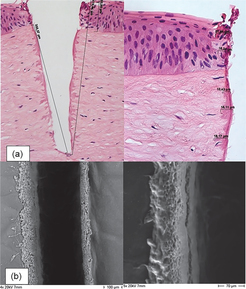Dr. Karl-Robert Brauns Prize for Ophthalmology 2016
Joint research team of the Max Planck Institute for the Structure and Dynamics of Matter located at CFEL and the University Medical Center Hamburg-Eppendorf receives award for a recent work on laser eye surgery
In their publication “A New Technology for Applanation Free Corneal Trephination: The Picosecond Infrared Laser (PIRL)” the research team around Stephan J. Linke of the University Medical Center Hamburg-Eppendorf (UKE) and R. J. Dwayne Miller of the Max Planck Institute for the Structure and Dynamics of Matter (MPSD) presents a feasibility study for the application of the picosecond infrared laser PIRL for corneal transplantations. It was shown that PIRL can be used for incisions of the corneal tissue with minimal collateral damage. Thus the PIRL system potentially represents a significant improvement compared to existing eye surgery techniques.
The study, published in the journal PLoS One last year, has now been awarded with the Dr. Karl-Robert Brauns Prize for Ophthalmology 2016. Stephan J. Linke of the UKE received the award on behalf of the research team at the ceremony on 15 June at the UKE’s Erika-Haus.
The Hamburg-based Dr. Liselotte and Dr. Karl-Robert Brauns Foundation awards the Dr. Karl-Robert Brauns Prize for Ophthalmology every two years for a recent outstanding work from the field of ophthalmology. It comes with prize money of € 7,500. Scientists who carried out their work in Hamburg or who were hosted by a research institution from Hamburg are eligible for application.
